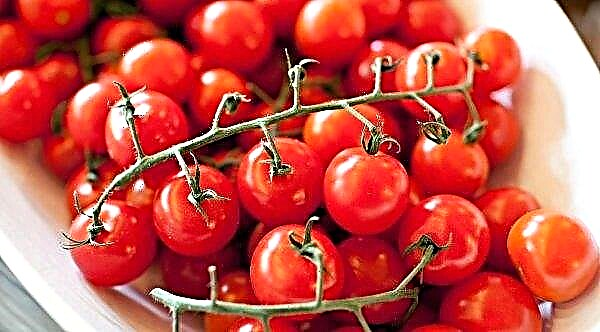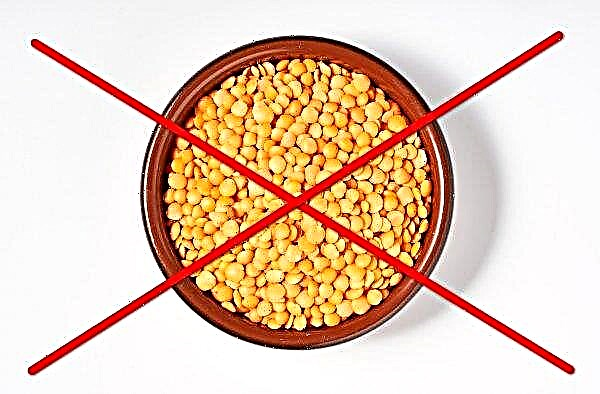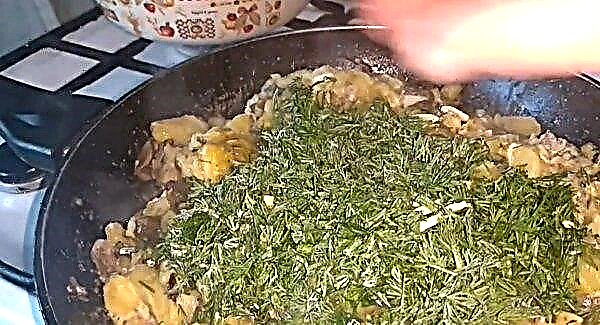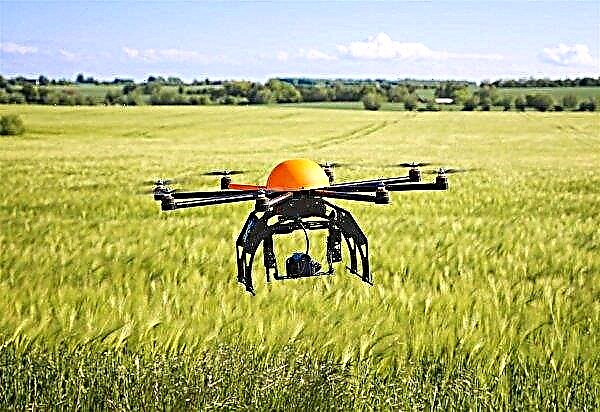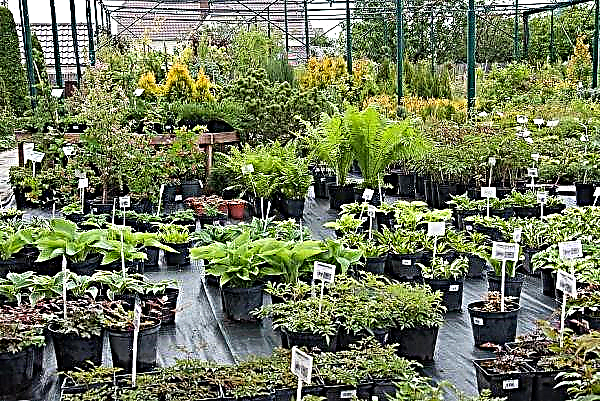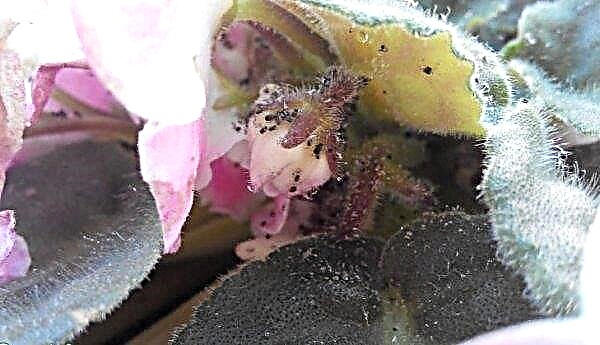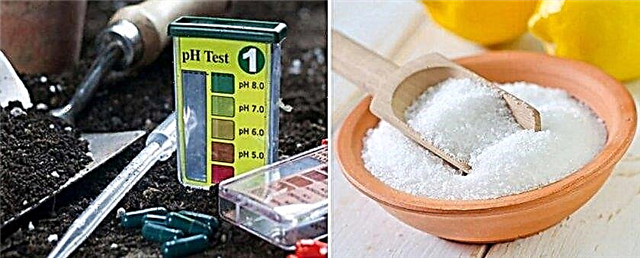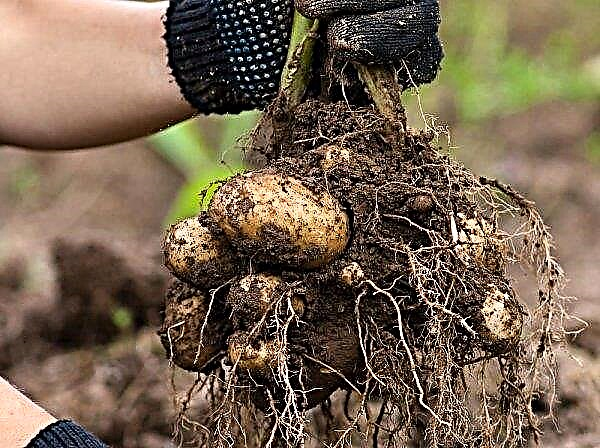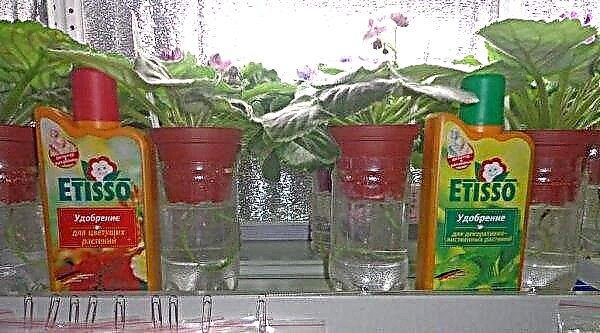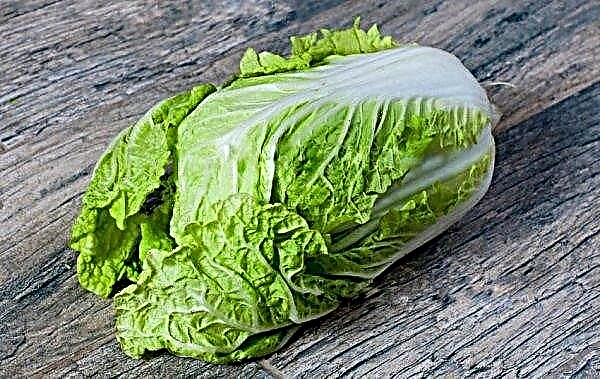Most blackberry cultivars are hardy and yield decent crops under various soil and climatic conditions. There is no general opinion among professional gardeners about when it is preferable to perform planting work, in spring or autumn. The article discusses the features of autumn planting of blackberry bushes.
Features autumn planting blackberries
Autumn transplantation of young blackberry bushes into the open ground is practiced in those places where autumn is long and warm. The culture does not tolerate low temperatures, there is a risk of freezing of immature young plants.
When can I transplant?
If frosts are expected to fall to –20 ° С in winter, then even frost-resistant varieties after transplantation in the fall are sheltered for a period of cold weather.
Did you know? The British have a lot of superstitious traditions associated with blackberries. For example, in England it is believed that a person who picks berries after October 11 will be defiled - supposedly on this day the devil himself is hunting for the fruits of blackberries.
It is important to plant seedlings a month before the first serious frosts arrive. The optimal time for this procedure will be the beginning of September - mid-October, when temperature indicators fluctuate within +11 ... + 25 ° С. In this case, the transplanted bush or cuttings will have enough time to root and adapt to new conditions before the onset of frost.
In this case, the transplanted bush or cuttings will have enough time to root and adapt to new conditions before the onset of frost.
Benefits of Autumn Transplant
- Many gardeners prefer the autumn transplant, arguing this with the following advantages:
- It is easier in autumn than in spring to provide the necessary conditions for future planting, the most important of which is warm soil. In addition, it is recommended to release soil from weeds and fertilize it in the autumn months.
- If the young bushes transplanted in autumn endure the first winter without any problems, in subsequent years they will please with resistance to weather conditions and resistance to ailments.
- In the autumn months, the sun is not as scorching as in the summer, so the bushes will feel more comfortable.
Transplant Preparation
In the case of planting blackberries in the autumn there are subtleties. Particular attention should be paid to the preparatory phase.
Site selection and preparation
It is recommended to place blackberry seedlings in the area illuminated by the sun's rays (but the sun should not be scorching) and protected from the wind. In partial shade and shadow, there is a threat of late ripening of berries, reduced frost resistance and deterioration of crop quality. And the impact of cold winds will lead to injury to leaves and berries, and prevent pollination. The soil should be moderately moist, because the plant will feel bad on a waterlogged or flooded area.
And the impact of cold winds will lead to injury to leaves and berries, and prevent pollination. The soil should be moderately moist, because the plant will feel bad on a waterlogged or flooded area.
Landing pattern
The method of planting depends directly on the number of shoots that the bush gives.
With a high level of shoot formation, the tape method of planting is practiced. Each seedling is planted in a separate hole in a row, the distance between which is about 1 m. Between the rows, a distance of 2 to 2.5 m is observed.
Important! Blackberries give a lot of shoots, so it is important to maintain a distance of at least 1 m from the berry to the buildings or fences.
At a low level of shoot formation, an alternative bush method is used. Several young plants are placed in one recess (the optimal distance between them is a little more than 1.5 m).
Pit preparation
Due to the fact that the root system of the blackberry lies relatively deep, the soil is loosened to a depth of 0.5 m.
Before the autumn planting of seedlings, it is recommended to fertilize the land plot. Pipette about 5 kg of compost or manure into each well, up to 150 g of superphosphate and three times less potassium fertilizer.
 Nutrients must be mixed with the ground so that the roots of the seedlings do not come into contact with them.
Nutrients must be mixed with the ground so that the roots of the seedlings do not come into contact with them.
The right choice of seedling
It is advisable to purchase planting material in special nurseries, where various forms of garden and repair blackberries are presented.
The remontant variety receives more positive reviews - its fruiting is more extended, and its resistance to climatic conditions and diseases is much higher.
As for the level of branch formation, from this point of view, it is better to give preference to annual specimens with several shoots, the diameter of which is more than 0.5 cm. Also pay attention to the rhizome - it should look healthy, without signs of decay. An eye should already be formed on it. An hour before rooting, the roots can be kept in a solution of 1 liter of water and 1 tsp of 3% hydrogen peroxide.
Also pay attention to the rhizome - it should look healthy, without signs of decay. An eye should already be formed on it. An hour before rooting, the roots can be kept in a solution of 1 liter of water and 1 tsp of 3% hydrogen peroxide.
Transfer
The seedling is carefully removed from the container and placed in a pre-prepared hole. The roots of the plant should be well spread, then fill them with soil in a mixture with humus. Water, then mulch with peat. Make sure that no air pockets form in the area.
Important! The growth bud should be deepened by 1-2 cm. With a greater depth, it will not break through, and with a shallower depth, it will weather and dry.
Watering and caring for transplanted plants
The ground under the berry must be periodically watered and loosened. The blackberry has a powerful rhizome, so the bushes do not need abundant irrigation. In the dry season, watering is carried out once a week until frost. After a blackberry transplant, do not rush to fertilize the plant, give it time to take root. It will not be superfluous to carry out preventive treatment from ailments and harmful insects. Treat plantings with a solution of 1 liter of water and 1 tsp of 3% hydrogen peroxide.
After a blackberry transplant, do not rush to fertilize the plant, give it time to take root. It will not be superfluous to carry out preventive treatment from ailments and harmful insects. Treat plantings with a solution of 1 liter of water and 1 tsp of 3% hydrogen peroxide.
Preparing for winter and wintering
An important step in preparing for wintering is the autumn pruning of shrubs. In addition, pruning will benefit the plant, contributing to an increase in fruitfulness next year.
Only those stems that bear fruit in the current year are subject to pruning. And lashes on which there were no fruits are simply shortened by 10–20 cm.Warming blackberries transplanted in autumn is an indispensable condition for caring for this crop.
Before the cold weather comes, you need to have time to bend the stems to the ground and cover them with corn leaves or branches of coniferous trees (up to 15 cm thick), and cover them with a film on top. Natural covering material can be replaced with agrofibre or roofing material.
Fall Transplant Mistakes
Try to avoid the typical mistakes that can occur during the autumn transplant of blackberry bushes:
- The distance between the bushes is the most common mistake made by beginners. Too dense planting blocks plants access to light and nutrition, and also complicates the process of caring for the berry. Left voids cause damage to the au pair. Equally important is the appearance of a blackberry, therefore, before purchasing planting material, you should familiarize yourself with the requirements of a particular variety of agricultural technology.
- Inexperienced gardeners make a gross mistake by feeding organic blackberries in the fall (not ripened manure, bird droppings). This threatens the freezing of the shoots and the growth of the pathogenic flora under the covering material.
- Do not rely on a high immunity of culture - though infrequently, the seedlings are infected with fungi that cause gray rot, verticillosis and other ailments. Try to choose a healthy and strong landing material.
- Take your time installing the supports for the blackberry. The tapestry can be organized when there is a need for it - when the bushes have reached sufficient size.
- A big mistake is driving in support pillars on the territory of the site where the bushes grow. Instead, the plants themselves should be planted directly along the supporting structure.
- And another mistake is placing a blackberry in a place where vegetable crops had previously grown.
 There are no special warnings for planting a blackberry in the autumn. On the contrary, transplanting this season has many advantages.
There are no special warnings for planting a blackberry in the autumn. On the contrary, transplanting this season has many advantages.Did you know? The leader in the production of blackberries today is Mexico.
Follow the above recommendations, and blackberry bushes will delight you with an attractive appearance and provide an opportunity to enjoy a fragrant and valuable berry.

